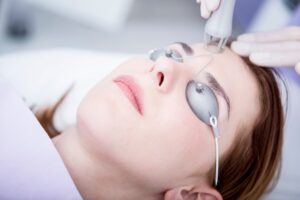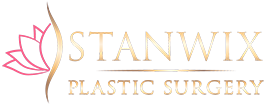Table of Contents
ToggleLaser resurfacing benefits and process
If you’re looking for smoother, healthier, younger-looking skin without surgery, laser resurfacing is one of the most effective options available today. Laser resurfacing treatments can help address wrinkles, sun damage, acne scars, and uneven tone, giving you a refreshed, rejuvenated appearance. In this guide, we have explained how laser resurfacing works, what to expect before and after treatment, who makes a good candidate, and frequently asked questions so you feel confident about your decision.
What Is Laser Resurfacing?
- Laser resurfacing is a non-surgical cosmetic procedure that uses targeted beams of light energy to remove damaged outer layers of skin and stimulate new collagen production. Over time, your skin naturally repairs itself, revealing a smoother, firmer, and more even-toned surface.
There are different types of lasers. Fractional laser technology is typically used, which treats only a fraction of the skin at a time, leaving surrounding tissues intact to speed healing. Fractional lasers are ideal because they create excellent results with less downtime than older, fully ablative lasers.
What Can Laser Resurfacing Treat?
Laser resurfacing can improve many common skin concerns, including:
- Fine lines and deeper wrinkles, especially around the eyes and mouth
- Acne scars and other types of scarring
- Sun damage and pigmentation spots
- Rough skin texture
- Enlarged pores
- Uneven skin tone
Because it works by vaporizing layers of damaged skin and triggering collagen renewal, laser resurfacing is a versatile treatment suitable for both early signs of aging and more advanced concerns.
How Does the Procedure Work?
- During your consultation, your surgeon will assess your skin type, goals, and medical history to determine if you are a suitable candidate. You will also learn about the type of laser and treatment depth that will deliver the best results. On the day of treatment, your skin is cleansed, and a topical numbing cream or local anesthesia is applied to keep you comfortable.
The laser handpiece is passed over the treatment area in a precise, patterned motion. You may feel warmth or a tingling sensation as the laser energy is delivered. A typical session can take anywhere from 30 minutes to over an hour, depending on the size of the area being treated and the depth of resurfacing.
What Is Recovery Like?
Recovery after laser resurfacing depends on how aggressive your treatment is.
Mild to Moderate Treatments
- Redness and mild swelling usually last a few days. Most patients feel comfortable returning to work within 3 to 5 days.
Deeper Resurfacing
- You may experience peeling, crusting, and redness for up to 7–10 days. Redness can linger, but typically fades gradually.
During healing, you’ll need to:
- Avoid direct sun exposure and wear high SPF sunscreen.
- Keep your skin moisturized and avoid picking or scrubbing peeling skin.
- Use any recommended ointments or gentle cleansers provided by your provider.
- While you’ll see some improvement right away, your skin will continue to improve over the next 3–6 months as collagen remodels and repairs.
Who Is a Good Candidate for Laser Resurfacing?
Laser resurfacing is an excellent option for men and women who:
- Have fair to medium skin tones (some lasers can be less safe for darker complexions)
- Want to address fine lines, wrinkles, pigmentation, or scarring
- Are in good overall health and don’t have active acne or certain medical conditions
- They are committed to protecting their skin during recovery
If you have a history of keloid scarring or certain skin disorders, your aesthetician will discuss whether laser resurfacing is appropriate or if other treatments might be safer.
Expected Results
- Laser resurfacing can create significant improvements in skin tone, texture, and firmness. Most patients notice their skin looks brighter, smoother, and more youthful within a few weeks. Results can last for years, especially when you practice good skincare and sun protection.
FAQs
How many treatments will I need?
Some patients get excellent results with a single session, especially with deeper resurfacing. Others may need a series of lighter treatments for gradual improvement.
Does laser resurfacing hurt?
Most patients describe the sensation as warm or prickly. Numbing cream and cooling measures help minimize discomfort.
When can I wear makeup again?
You can wear makeup usually within 7–10 days, once the initial healing has completed and any crusting has resolved.
Is laser resurfacing safe?
When performed by an experienced, board-certified surgeon like Dr. Stanwix, laser resurfacing is safe and effective. Following all aftercare instructions will help minimize the risk of complications.
How long will the results last?
Results can last several years, but your skin will continue to age naturally. Periodic maintenance treatments and consistent skincare can help you keep your results longer.
If you’re curious whether laser resurfacing in Richmond can help you achieve smoother, younger-looking skin, schedule a personal consultation with Dr. Stanwix today. With his experience and attention to detail, you can trust that your treatment plan will be tailored to your goals and skin type. Call us at 804-724-7244 today.

